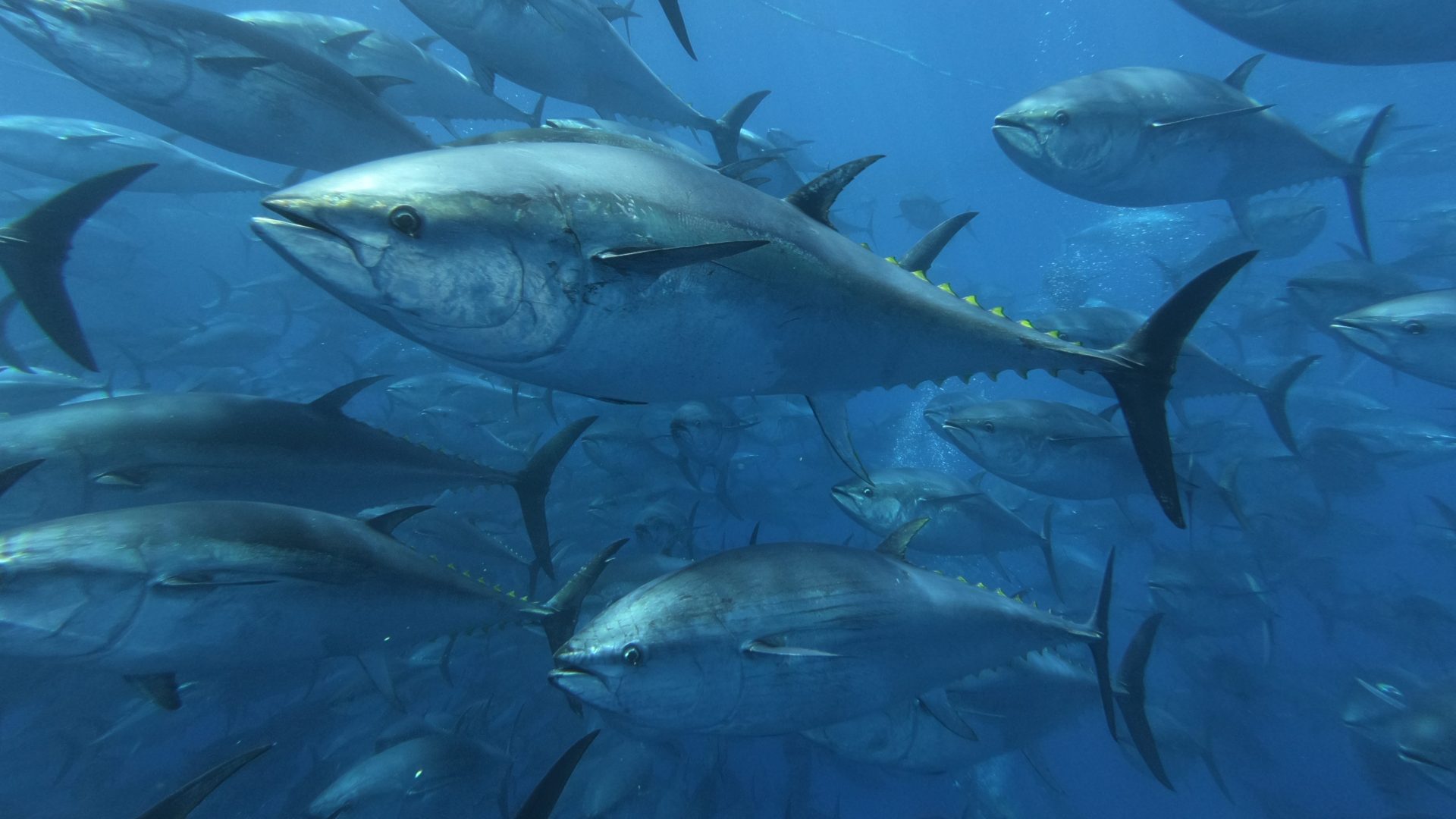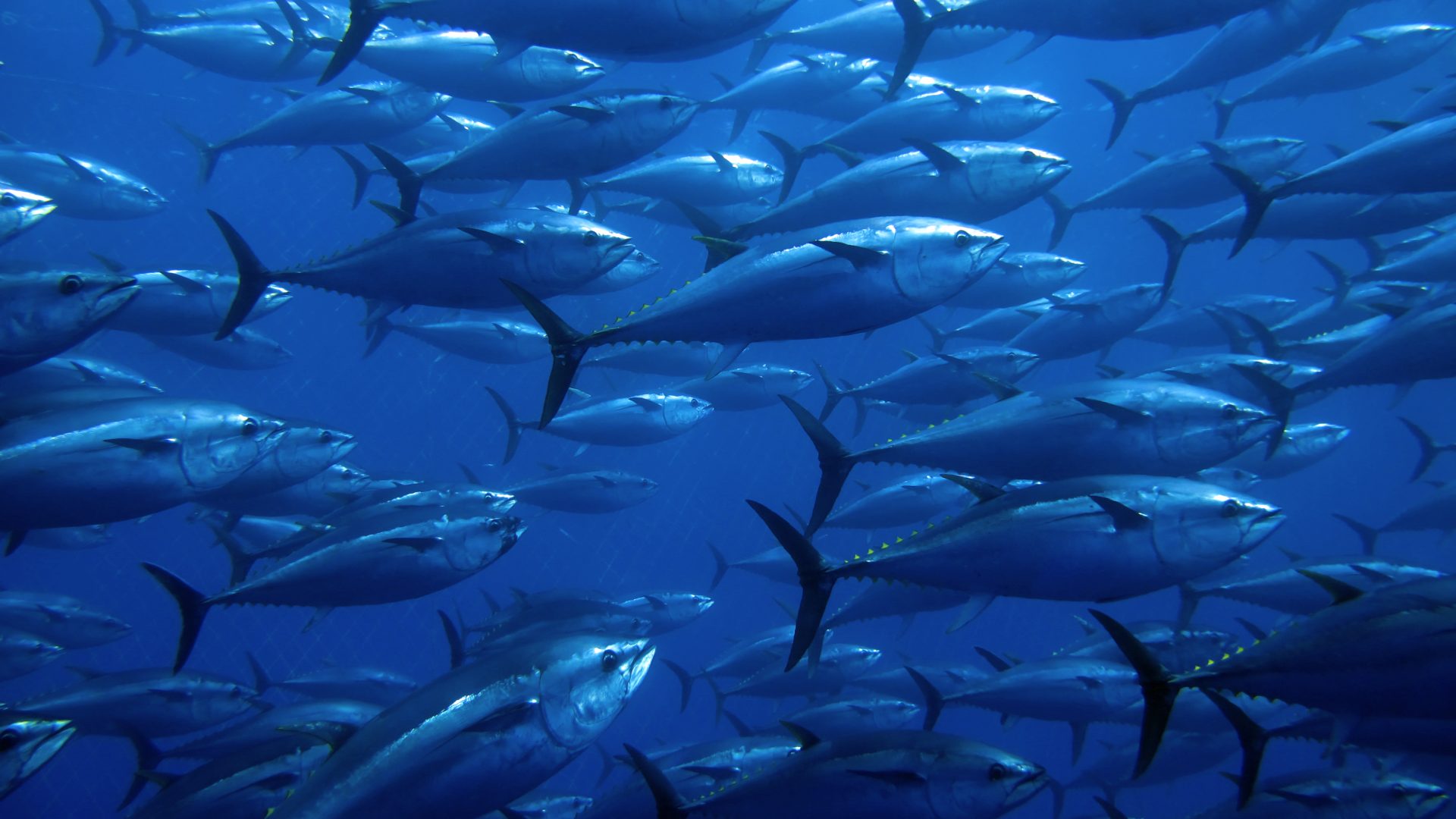The return of the Bluefin Tuna.
Our Chief Scientific Adviser, Martin Attrill, poses some interesting questions on why marine wildlife might be treated differently.

A few years ago, we were taking a walk up Rame Head, the south-east point of Cornwall. It was a grey but very still day, and as we sat on a bench looking down across the entrance to Plymouth Sound suddenly a ring of frothing water appeared on the sea surface below us. The seagulls became very interested as the sea started to boil, when suddenly a huge fish launched out of the water from the middle of the froth. This was repeated several times as we sat in awe, exhilarated by what we were watching – this was my first experience of seeing Atlantic Bluefin Tuna in UK waters.
The appearance of these amazing animals in our local seas since 2014 has been a rare good-news story, with increasing numbers of sightings year on year. Bluefins are the largest of the tuna species, and one of the biggest bony fishes in the world, growing to over 4 metres long and weighing up to 900 kg (that’s over 140 stone in old money)! They can also potentially live to over 35 years and are amongst the fastest swimming of all fish, reaching speeds of over 60 km/h (40+ mph). Unlike some more recent warm water additions to our UK fish fauna, Bluefin tuna used to be part of the UK marine environment – in the 1930s there was the British Tunny Club, a sports fishing society based in Scarborough that went out angling for Bluefin in the North Sea. However, due to the usual sorry tale of overexploitation, these huge fish disappeared from our waters in the 1960s, but strict quotas on the Atlantic Bluefin fishery have allowed the population to start to recover.
Following this recovery, the call is now out to restart a commercial fishery for Bluefin in UK waters, with a trial ongoing at the moment, including 10 vessels in Southwest England using rod and line and allowed 1 fish per day to a total catch of 65 tonnes. The first Bluefin to be landed commercially for decades weighed 200 kg and sold, for sushi in London, for £2,000. Bluefin is one of the most expensive fish in the world, hence the excitement at the chance to fish the species again.
The return of Bluefin, and its commercial fishery, to the UK raises some interesting discussion points about how we view marine wildlife and whether there are other ways of “exploiting” these animals. Firstly, each fish caught is clearly very lucrative for the fishers but is a one-off. Could as much income be raised from ecotourism, boats heading out to see the Bluefin in action, or even a catch-and-release angling programme (maybe linked to tagging the fish)? A couple of angling vessels with 20 people paying £100 gets you to the £2,000 value and the fish goes back in the water. Maybe we need to think more widely about how keeping such large animals in the sea can benefit our coastal economies.
Secondly, why do we view these amazing, huge, fast top predators differently from other similar wildlife, such as dolphins in the sea or tigers on land and crocodiles in rivers? Perhaps partly it is due to rarity, although Atlantic Bluefin Tuna until recently were classed as Endangered, or is it we, as a society, don’t consider fish (such as huge Bluefin and Sharks) as worthy as other vertebrates? Is it anything to do with perceived intelligence? Whatever, it is perhaps good to reflect on this and why the image of the Bluefin landed in southwest England may not raise the same feelings as if it were a dolphin, seal or turtle. Should we treat all such magnificent huge wildlife the same?



